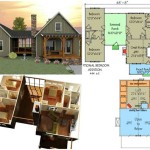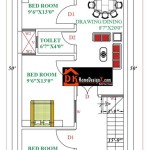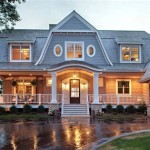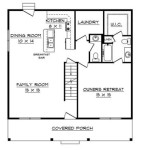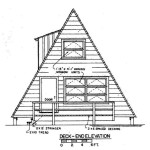House floor plans designs serve as blueprints that outline the arrangement and layout of a house’s interior space. They provide a visual representation of the home’s structure, including the placement of rooms, hallways, windows, and doors. Floor plans are essential for planning construction projects, renovations, and determining the overall functionality and livability of a house.
Whether you’re designing a new home or renovating an existing one, having a well-thought-out floor plan is crucial. A well-designed plan can optimize space utilization, enhance natural lighting, and create a seamless flow between different areas of the house.
In this article, we will delve into the various aspects of house floor plans designs. We will explore different types of plans, design principles, and the role of professionals in creating functional and aesthetically pleasing floor plans.
When designing a house floor plan, there are several key points to consider:
- Space planning
- Traffic flow
- Natural lighting
- Room adjacencies
- Storage solutions
- Structural considerations
- Building codes
- Energy efficiency
- Aesthetics
- Budget
By carefully considering these factors, you can create a floor plan that meets your specific needs and creates a comfortable, functional, and visually appealing living space.
Space planning
Space planning is the process of arranging the various elements of a floor plan to create a functional and efficient living space. It involves determining the size and shape of each room, as well as the placement of walls, doors, and windows.
One of the key aspects of space planning is to maximize space utilization. This can be achieved by using space-saving techniques such as built-in storage, multi-purpose furniture, and open floor plans. It is also important to consider the flow of traffic through the house, ensuring that there are no bottlenecks or awkward transitions between rooms.
Another important consideration is natural lighting. By placing windows and doors strategically, you can take advantage of natural light to brighten up your home and reduce the need for artificial lighting. This can not only save energy but also create a more comfortable and inviting living environment.
Finally, it is important to consider the adjacencies of rooms when planning your floor plan. For example, it makes sense to place the kitchen near the dining room, and the bedrooms near the bathrooms. By carefully considering the relationships between different rooms, you can create a floor plan that is both functional and convenient.
Space planning is a complex but essential part of designing a house floor plan. By carefully considering the factors discussed above, you can create a floor plan that meets your specific needs and creates a comfortable, functional, and visually appealing living space.
Traffic flow
Traffic flow refers to the movement of people through a house. A well-designed floor plan will minimize traffic congestion and create a smooth flow of movement between different areas of the house.
Here are some key points to consider when designing for traffic flow:
- Minimize bottlenecks
Bottlenecks are areas where traffic is likely to become congested. Common bottlenecks include hallways, doorways, and stairs. To avoid bottlenecks, make sure that these areas are wide enough to accommodate the flow of traffic. - Create clear pathways
People should be able to move easily from one room to another without having to navigate obstacles or awkward transitions. Make sure that hallways and doorways are aligned and that there are no obstructions in the way. - Separate public and private spaces
Public spaces, such as the living room and dining room, should be easily accessible from the main entrance. Private spaces, such as bedrooms and bathrooms, should be located off of hallways or in separate wings of the house. - Consider the flow of traffic during different activities
Think about how people will move through the house during different activities, such as cooking, entertaining, and sleeping. Make sure that the floor plan accommodates these activities without creating conflicts.
By carefully considering traffic flow, you can create a floor plan that is both functional and convenient. Your home should be a place where you can move around easily and comfortably, without feeling cramped or congested.
Natural lighting
Natural lighting is an essential element of a well-designed house floor plan. By placing windows and doors strategically, you can take advantage of natural light to brighten up your home and reduce the need for artificial lighting. This can not only save energy but also create a more comfortable and inviting living environment.
Here are some key points to consider when designing for natural lighting:
- Maximize window size and placement
The larger the windows, the more natural light will enter your home. When placing windows, consider the orientation of your house and the path of the sun. South-facing windows will receive the most sunlight, while north-facing windows will receive the least. - Use skylights and solar tubes
Skylights and solar tubes can be used to bring natural light into areas of your home that don’t have windows, such as hallways, bathrooms, and closets. Skylights are installed in the roof, while solar tubes are installed in the ceiling. - Consider the use of reflective surfaces
Reflective surfaces, such as mirrors and light-colored walls, can help to bounce natural light around a room, making it feel brighter and more spacious. - Avoid blocking natural light
When placing furniture and other objects in your home, be careful not to block natural light sources. For example, avoid placing tall furniture in front of windows.
By carefully considering natural lighting, you can create a floor plan that takes advantage of the sun’s natural energy to create a brighter, more comfortable, and more energy-efficient home.
In addition to the benefits listed above, natural lighting has also been shown to have a positive impact on our health and well-being. Studies have shown that exposure to natural light can help to improve our mood, sleep, and cognitive function. It can also reduce stress and eye strain.
By incorporating natural lighting into your house floor plan, you can create a home that is not only beautiful and functional, but also healthy and sustainable.
Room adjacencies
Room adjacencies refer to the placement of rooms in relation to each other. Careful consideration of room adjacencies can help to create a more functional and convenient floor plan.
Here are some key points to consider when planning room adjacencies:
- Group similar functions together
Rooms that serve similar functions should be grouped together. For example, the kitchen, dining room, and pantry should be located near each other. The bedrooms and bathrooms should be located in a separate wing of the house. - Consider traffic flow
When placing rooms, consider how people will move through the house. Avoid placing rooms that are frequently used together too far apart. For example, the kitchen should be easily accessible from the dining room and family room. - Provide privacy for private spaces
Private spaces, such as bedrooms and bathrooms, should be located away from public spaces, such as the living room and dining room. This will help to create a more peaceful and relaxing environment for private activities. - Consider future needs
When planning room adjacencies, consider how your needs may change in the future. For example, if you are planning to have children, you may want to place the bedrooms near the master bedroom. Or, if you are planning to age in place, you may want to place the master bedroom on the first floor.
By carefully considering room adjacencies, you can create a floor plan that is both functional and convenient. Your home should be a place where you can live comfortably and efficiently, without feeling cramped or congested.
Storage solutions
Adequate storage space is essential for any home. A well-designed floor plan will include a variety of storage solutions to help you keep your home organized and clutter-free.
- Built-in storage
Built-in storage is a great way to maximize space and create a more cohesive look in your home. Built-in shelves, cabinets, and drawers can be customized to fit any space and can be used to store a variety of items, from books and dishes to clothes and toys. - Walk-in closets
Walk-in closets are a luxury that can make a big difference in the functionality of your home. They provide ample space for storing clothes, shoes, and other belongings, and can help to keep your bedroom tidy and organized. - Attic and basement storage
The attic and basement can be great places to store seasonal items, bulky items, and other belongings that you don’t need to access on a regular basis. However, it is important to make sure that these areas are properly insulated and ventilated to prevent damage to your belongings. - Garage storage
The garage is often overlooked as a storage space, but it can be a great place to store tools, sporting equipment, and other items that you don’t need to keep in the house. By installing shelves, cabinets, and other storage solutions in your garage, you can keep it organized and clutter-free.
By carefully considering storage solutions when designing your house floor plan, you can create a home that is both functional and organized. Your home should be a place where you can live comfortably and efficiently, without feeling cramped or cluttered.
Structural considerations
Structural considerations are an important part of house floor plans designs. These considerations ensure that the house is safe and stable, and that it can withstand the forces of nature.
- Foundation
The foundation is the base of the house, and it is responsible for transferring the weight of the house to the ground. The type of foundation that is used will depend on the soil conditions and the climate. In areas with cold climates, a deep foundation is necessary to prevent the house from shifting due to frost heave. - Framing
The framing is the skeleton of the house, and it is responsible for supporting the weight of the roof and the walls. The type of framing that is used will depend on the size and shape of the house. Common framing materials include wood, steel, and concrete. - Roofing
The roof is the top of the house, and it is responsible for protecting the house from the elements. The type of roofing that is used will depend on the climate and the architectural style of the house. Common roofing materials include asphalt shingles, metal, and tile. - Windows and doors
Windows and doors are openings in the house that allow for light and ventilation. The size and placement of windows and doors will depend on the architectural style of the house and the amount of natural light that is desired.
By carefully considering structural considerations when designing your house floor plan, you can create a home that is safe, stable, and beautiful.
Building codes
Building codes are regulations that govern the construction of buildings. They are in place to ensure that buildings are safe and habitable, and that they meet certain minimum standards of quality. Building codes are typically developed by local governments, but they can also be developed by state or federal governments.
Building codes cover a wide range of topics, including structural design, fire safety, plumbing, electrical systems, and energy efficiency. When designing a house floor plan, it is important to be aware of the building codes that apply to your area. This will help you to ensure that your home is safe and compliant with the law.
Here are some of the key building code requirements that relate to house floor plans designs:
- Minimum room sizes
Building codes typically specify minimum room sizes for different types of rooms, such as bedrooms, bathrooms, and kitchens. These requirements are in place to ensure that rooms are large enough to be habitable and functional. - Window and door sizes and placement
Building codes also specify minimum window and door sizes and placement requirements. These requirements are in place to ensure that there is adequate natural light and ventilation in all rooms. - Structural requirements
Building codes also include structural requirements that govern the design of the house’s foundation, framing, and roof. These requirements are in place to ensure that the house is strong enough to withstand the forces of nature, such as wind and snow. - Fire safety requirements
Building codes also include fire safety requirements that govern the placement of smoke detectors, fire extinguishers, and fire sprinklers. These requirements are in place to help prevent fires and to protect occupants in the event of a fire.
By carefully considering building codes when designing your house floor plan, you can create a home that is safe, compliant with the law, and meets your specific needs.
Energy efficiency
Energy efficiency is an important consideration for any home. A well-designed floor plan can help to reduce energy consumption and lower your utility bills. Here are some key points to consider when designing for energy efficiency:
- Orientation
The orientation of your house can have a big impact on its energy efficiency. A house that is oriented to the south will receive more sunlight, which can help to heat the house in the winter. In the summer, deciduous trees can be planted on the south side of the house to shade the windows and help keep the house cool. - Insulation
Insulation is one of the most important factors in energy efficiency. It helps to keep the heat in during the winter and the cool air in during the summer. Insulation should be installed in the walls, ceiling, and floor of your home. - Windows and doors
Windows and doors are another important factor in energy efficiency. They can allow heat to escape in the winter and cool air to escape in the summer. Look for windows and doors that are Energy Star certified. Energy Star certified windows and doors meet strict energy efficiency standards. - Appliances
The appliances you choose can also have a big impact on your energy consumption. Look for appliances that are Energy Star certified. Energy Star certified appliances meet strict energy efficiency standards.
By carefully considering energy efficiency when designing your house floor plan, you can create a home that is comfortable, affordable, and environmentally friendly.
Aesthetics
The aesthetics of a house floor plan design play a major role in determining the overall look and feel of the home. When designing a floor plan, it is important to consider the architectural style of the home, the desired ambiance, and the personal preferences of the homeowners.
- Architectural style
The architectural style of the home will dictate many of the aesthetic choices made in the floor plan design. For example, a traditional home will typically have a symmetrical floor plan with formal rooms, while a modern home may have an open floor plan with large windows and natural light. - Desired ambiance
The desired ambiance of the home is another important consideration. A warm and inviting home will typically have a cozy floor plan with smaller rooms and intimate spaces, while a more formal home may have a grand floor plan with large rooms and high ceilings. - Personal preferences
The personal preferences of the homeowners should also be taken into account when designing the floor plan. Some homeowners may prefer a traditional floor plan with separate rooms for each function, while others may prefer an open floor plan that allows for more flexibility and interaction.
By carefully considering all of these factors, homeowners can create a house floor plan design that is both aesthetically pleasing and functional.
Budget
The budget is one of the most important factors to consider when designing a house floor plan. The size, complexity, and features of the floor plan will all impact the cost of construction. It is important to set a realistic budget before beginning the design process to avoid overspending.
- Size of the house
The size of the house is one of the biggest factors that will affect the cost of construction. A larger house will require more materials and labor to build, which will increase the cost. It is important to determine the size of the house that you need before beginning the design process. Consider your current and future needs, as well as the size of your family. - Complexity of the floor plan
The complexity of the floor plan will also affect the cost of construction. A simple floor plan with few rooms and hallways will be less expensive to build than a complex floor plan with many rooms, hallways, and other features. If you are on a tight budget, it is important to keep the floor plan as simple as possible. - Features of the house
The features of the house will also impact the cost of construction. For example, a house with a lot of windows and doors will be more expensive to build than a house with fewer windows and doors. Other features, such as fireplaces, built-in appliances, and custom finishes, will also add to the cost of construction. - Location of the house
The location of the house can also affect the cost of construction. Building costs vary from region to region, so it is important to factor in the cost of construction in your area when setting your budget.
By carefully considering all of these factors, you can set a realistic budget for your house floor plan design.









Related Posts

